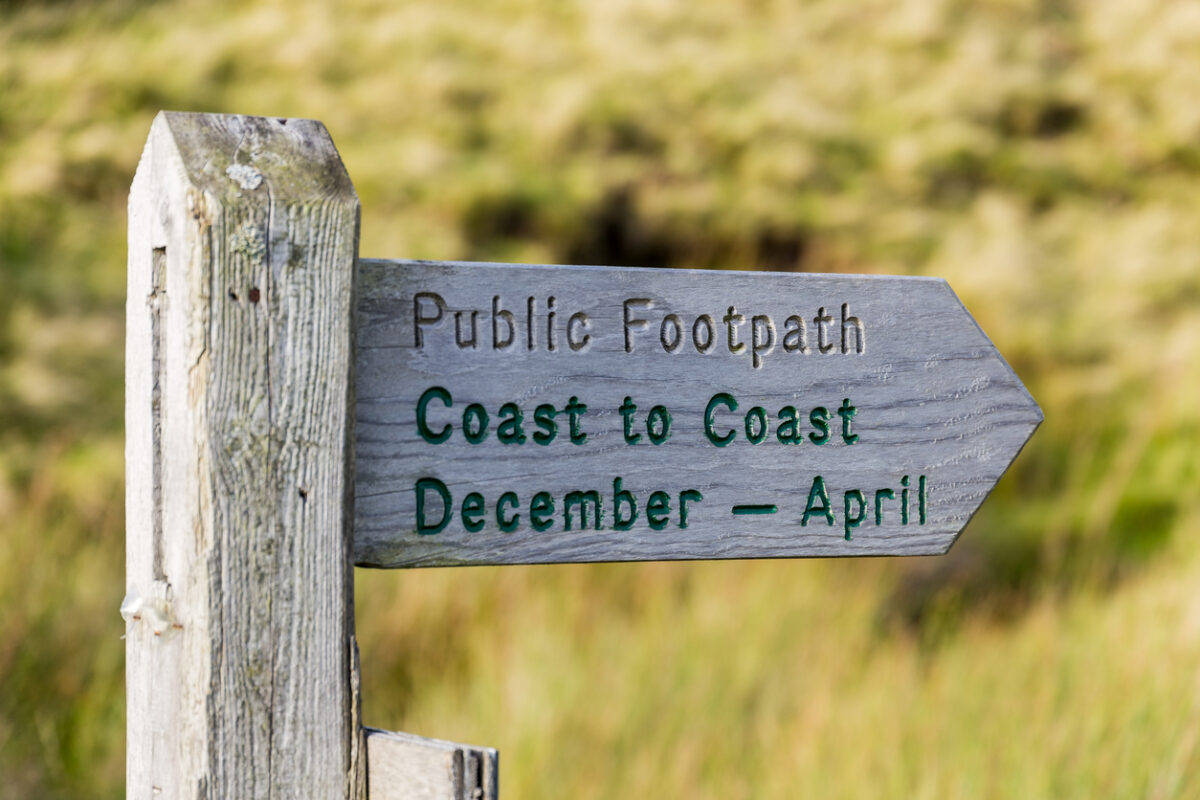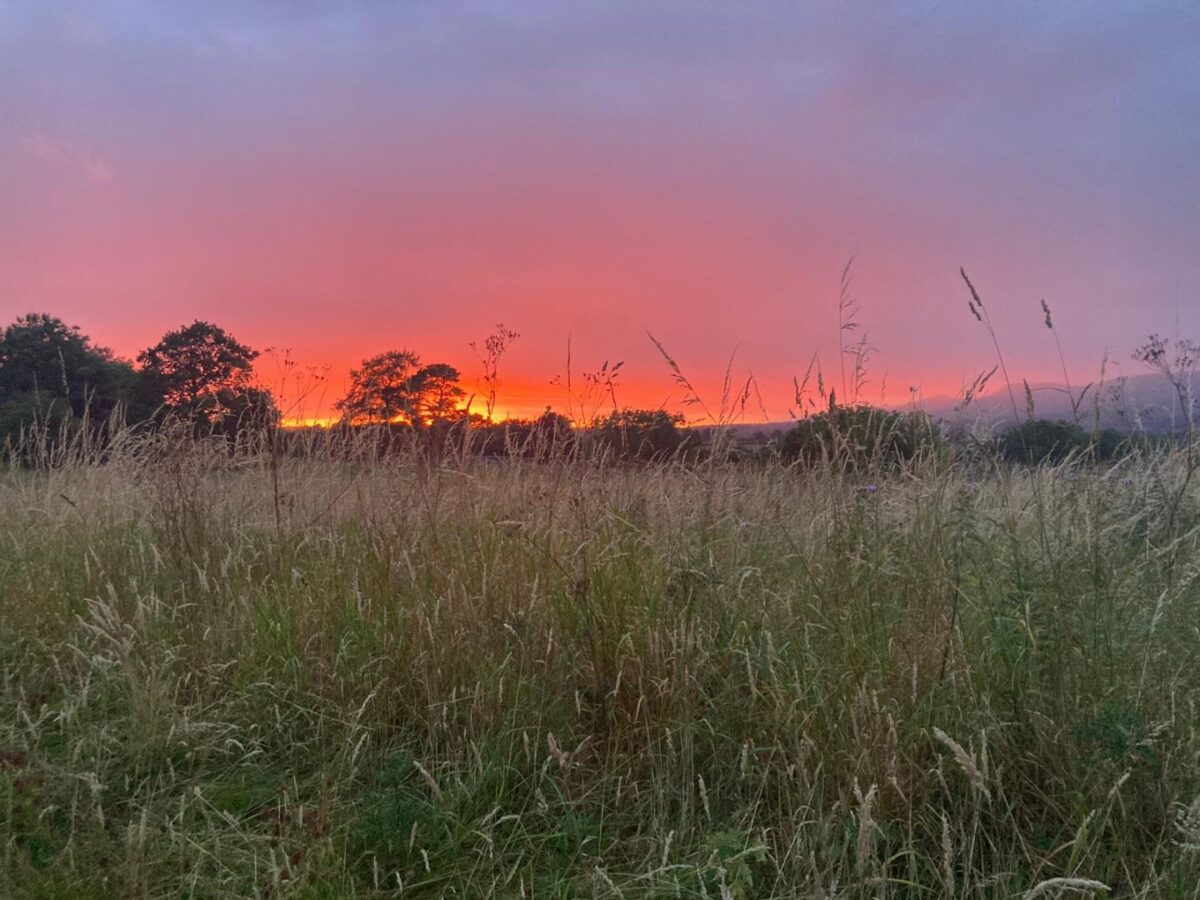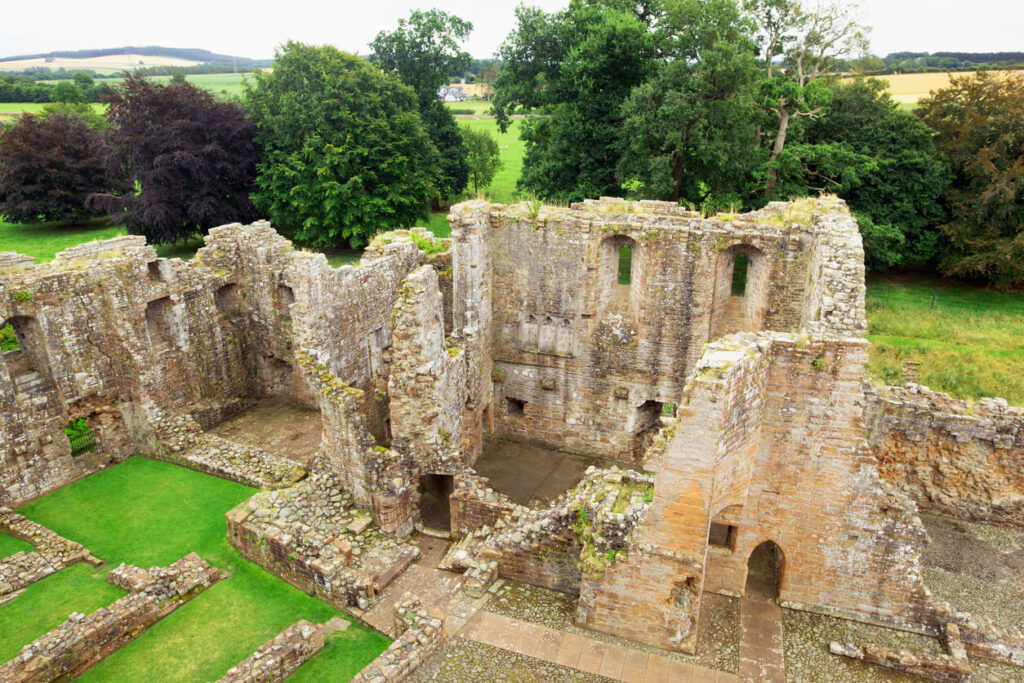History of the Coast to Coast Walk
The Coast to Coast walk was first published in Alfred Wainwright’s guidebook of the same name, A Coast to Coast Walk, in 1973. The famous fell walker, illustrator and guidebook author designed the route connecting the dramatic landscapes between the Irish Sea and the North Sea after falling in love with the Lake District on his first visit at the age of 23.
As a highly intelligent child, and a prolific walker with a fondness for cartography, he enjoyed rambling and sketching from an early age. It’s no wonder then his life’s work brought him to the Lake District which inspired his Pictorial Guide to the Lakeland Fells across seven volumes, showcasing the 214 mountains which are now referred to as Wainwrights. Today, Wainwright ‘bagging’ remains a popular pursuit amongst locals and visitors alike.
With over 40 guidebooks published during his lifetime, Wainwright leaves a legacy that inspires thousands of people each year to climb the mountains he illustrated and walk the epic coast to coast path he painstakingly detailed.
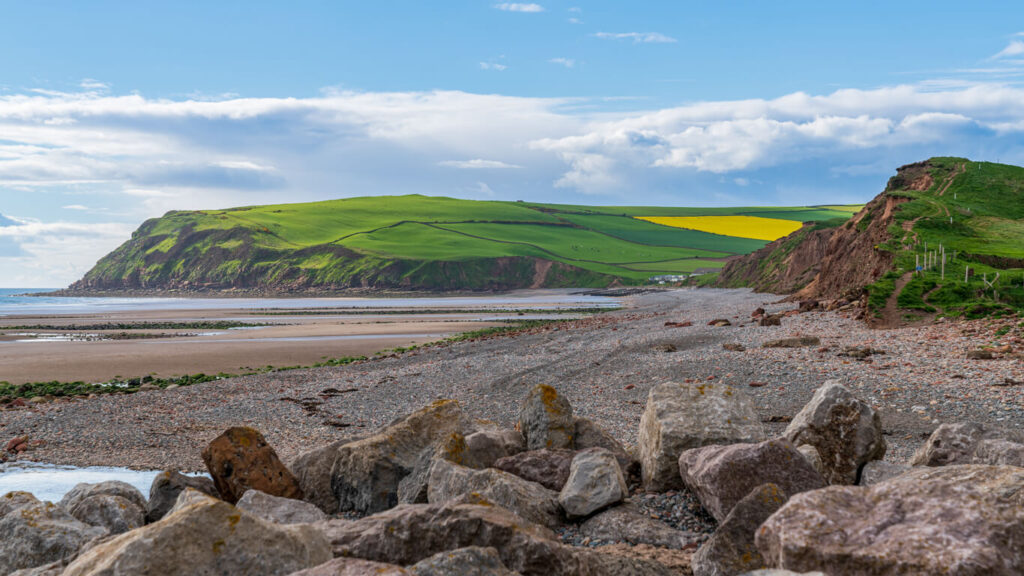
How Long is the Coast to Coast Walk?
The English Coast to Coast walk is a hiking route that stretches across the country from St. Bees on the Cumbrian coast in the west, to Robin Hood’s Bay on the North Sea coast in the east. The path is approximately 192 miles long and journeys across two counties – Cumbria and North Yorkshire – and three national parks. More on those below.
Most people choose to start in the west at St. Bees and walk east. The only drawback of this way round is that the hardest parts of the walk are at the beginning, although there are advantages to getting the toughest bits done first. Otherwise, you can begin walking from Robin Hood’s Bay in North Yorkshire and work your way up to the dramatic Lake District fells to end on a high.
Coast to Coast itineraries typically take between 12 and 16 days to cover the whole route, although you can take longer and enjoy more rest days exploring the highlights along the way.
How Hard is the Coast to Coast Walk?
It’s a 190 mile route, requiring between 10 and 25 miles walking each day, depending on how many days you’ve allowed. Whilst walking Coast to Coast in England follows a famous route, it is no easy feat. You must have a decent level of fitness and be used to fell walking to be able to cover the daily distances, on consecutive days. This is entirely achievable with plenty of preparation and a positive attitude.
However, it is worth noting that conditions are highly changeable and inclement weather can descend quickly. Being prepared for this with waterproof gear and provisions is essential, even during the summer months – this is England after all! You should also be experienced at navigating using maps and a compass. The route is well signposted in places but not in its entirety so being able to pinpoint your location will ensure you don’t get lost along the way.
Walking the Coast to Coast is an incredible experience and enjoyed by people of all ages. With the right training, planning and mindset, this iconic journey is a memorable one, taking you across some of the most stunning natural landscapes in the country.
The Stages of the Coast to Coast Walk
Below is an example of how the England Coast to Coast Walk could be broken down into stages across 14 days, walking from west to east.
| Day | Start | Finish | Distance |
| 1 | St. Bees | Ennerdale Bridge | 14 mi / 22.5 km |
| 2 | Ennerdale Bridge | Rosthwaite | 14 mi / 22.5 km |
| 3 | Rosthwaite | Patterdale | 17 mi / 27.25 km |
| 4 | Patterdale | Bampton | 11.5 mi / 18.5 km |
| 5 | Bampton | Orton | 11.5 mi / 18.5 km |
| 6 | Orton | Kirkby Stephen | 12.5 mi / 20 km |
| 7 | Kirkby Stephen | Keld | 11 mi / 17.75 km |
| 8 | Keld | Reeth | 10.5 mi / 17 km |
| 9 | Reeth | Richmond | 15 mi / 24 km |
| 10 | Richmond | Ingleby Arncliffe | 23 mi / 37 km |
| 11 | Ingleby Arncliffe | Clay Bank Top | 11 mi / 17.75 km |
| 12 | Clay Bank Top | Lion Inn | 9 mi / 14.5 km |
| 13 | Lion Inn | Grosmont | 12.5 mi / 20 km |
| 14 | Grosmont | Robin Hood’s Bay | 15.5 mi / 25 km |
You can choose to break these stages down further or incorporate rest days at some of the more scenic points. Grasmere is a stunning place to rest between Rosthwaite and Patterdale, and a lovely village to explore during downtime. Kirkby Stephen sits along the midpoint of the route and is another gem of a town, nestled in the heart of the Eden Valley. Richmond is the largest town on the route and is natural stopping point before hiking to Ingleby Arncliffe.
Highlights of the Route
St. Bees
Wainwright chose a particularly stunning setting to begin Coast to Coast walks. St. Bees beach is a beautiful sandy bay flanked by the dramatic red cliffs of St. Bees Head, watched by a plethora of birdlife flying overhead. An excellent place to stay a night or two before or after your journey.
Lake District
The Lake District National Park is one of the most popular places to visit in the UK and it’s not hard to see why. With high mountain peaks, gorgeous lakes and plenty of adventure activities on offer, the Lakes is a fantastic place to explore and what better way to enjoy it than on two feet. Some of the most strenuous days walking are across the Lakeland peaks but the panoramic views are a welcome distraction from tired legs and sore knees.
Kirkby Stephen
The midpoint of the Coast to Coast UK is a lovely market town with a welcoming community. Nestled in the Eden Valley, on the cusp of the Yorkshire Dales, Kirkby Stephen is less well known than Lake District hotspots, but equally picturesque. Break your journey here and spend a few days relaxing in the local cafés, wandering along the River Eden, riding the scenic Settle to Carlisle Railway line and resting those feet.
Yorkshire Dales
Completely different to the Lakes but no less stunning, the Yorkshire Dales feels much wilder and more remote. Made up of limestone crags and lush valleys, the high moorland expanses are speckled with drystone walls and hidden farmsteads. It is a true pleasure to walk across this magnificent region, discovering its secrets along the way.
North York Moors
Different again are the North York Moors. Rugged coastline meets heather-covered moors here along the Heritage Coast of England. An area steeped in history, walking across the North York Moors offers a sense of peace, tranquillity and space where the horizon stretches for miles. Whilst the terrain is not as mountainous as the Lakes, the distances to walk are long, making this a challenging but rewarding stage of your route.
Robin Hood’s Bay
The final, or first, village on the Wainwright Coast to Coast walk route, Robin Hood’s Bay, is a charming fishing village on the east coast of the North York Moors. Winding cobbled streets give way to open sandy beach which can be glimpsed amongst the higgledy piggledy buildings as you get lost in this vibrant little place. Take the time to explore here before or after your walk and you won’t be disappointed.
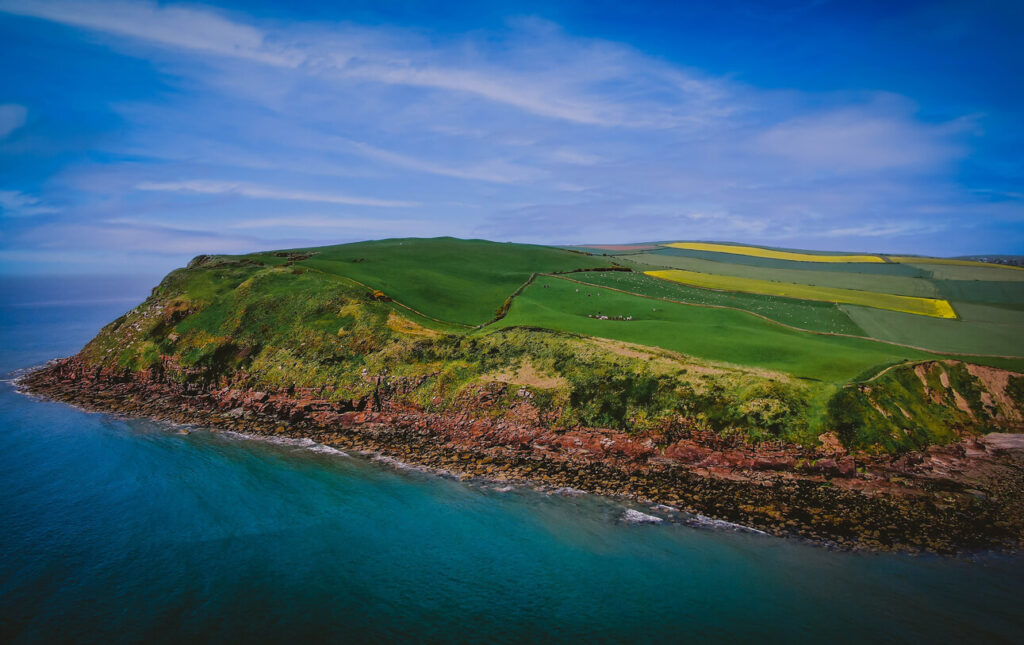
What to Pack for your Walk
Anyone who has enjoyed walking in England will know that it’s a good idea to pack sun cream and waterproofs on any given day! Unless you’re camping, you’ll likely be carrying a daypack with you. It’s important to pack plenty of water, snacks, a picnic lunch, dry socks, a map, compass, spare power bank, warm layers for higher altitudes and windy days, and a hat.
If you’re camping, try to keep your pack as light as possible with a lightweight tent, sleeping mat and sleeping bag, light ready meals and a small stove, a good backpack cover to keep your things dry and plenty of layers for when the temperature drops at night.
Best Time to Walk the Coast to Coast
You can trek the Coast to Coast any time of year but bear in mind winter conditions will bring more challenges and may disturb your progress. Thick fog, snow, ice, freezing rain and high winds are all risky conditions to walk in so unless you’re an experienced all-weather hiker, consider spring or autumn for Coast to Coast walking holidays. The weather will be milder; there will be less people about than during the summer months and you’ll have the added benefit of experiencing the beautiful landscapes you traverse as they flourish and transform.
Coast to Coast Accommodation
If you’re keen campers and happy to carry your equipment with you then you’ll have more flexibility about where you stop. There will be campsites of all shapes and sizes along the route so even if you don’t hit the stage you’re aiming for, you should be able to find somewhere to pitch easily enough.
Most people don’t want to carry their belongings with them, which is where baggage transfer services are super useful. For a fee, you can have your luggage picked up from your Coast to Coast accommodation each day and transferred to the next overnight stop by vehicle as you walk from one place to another. This not only reduces the amount you have to carry, but gives a strong incentive to keep on walking, despite tired legs!
The table above will help signpost you to some of the most popular places to stay along the route. We’d recommend opting for comfortable accommodation close to shops or pubs making it easy to find food after a long day’s walking.
Why Winton Makes an Excellent Midpoint Stay
Hill House Winton is one such establishment. Just over a mile north of Kirkby Stephen, the village of Winton is a wonderful place to relax and rest on your Coast to Coast walking holiday. Enjoying a peaceful rural location, close enough to the larger town of Kirkby Stephen to benefit from the shops, eateries and amenities, but far enough away to retreat to a luxurious holiday cottage, we offer the best of both worlds.
Spend a few days recovering here in a comfortable cottage that’s ideal for couples, groups of friends or families – we’re also dog friendly. There’s a fantastic restaurant in the village too, The Bay Horse Winton, so you don’t have to stray far for a decent meal. We usually have a three night minimum stay which is plenty of time to explore things to do in Kirkby Stephen and the surrounding areas. Shorter stays can sometimes be arranged for larger groups on request if you get in touch with us directly.
Check out our beautiful Coast to Coast walk accommodation and treat yourself to a well-earned rest in our gorgeous little corner of Cumbria.

